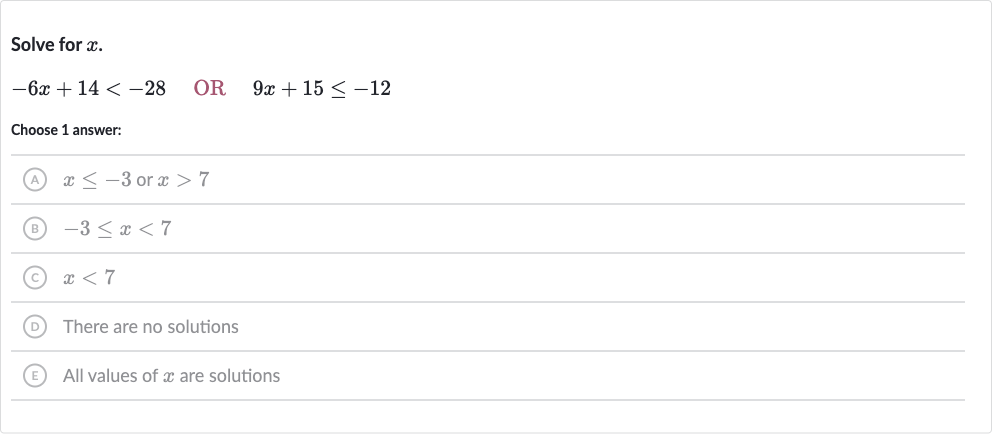Full solution
Q. Solve for . OR Choose answer:(A) or (B) (C) (D) There are no solutions(E) All values of are solutions
- Solving the first inequality: First, let's solve the inequality -6x + 14 < -28.Subtract from both sides to isolate the term with .-6x + 14 - 14 < -28 - 14-6x < -42Now, divide both sides by . Remember that dividing by a negative number reverses the inequality sign.x > 7
- Solving the second inequality: Next, let's solve the inequality .Subtract from both sides to isolate the term with .Now, divide both sides by .
- Combining the solutions: Now we have two parts of the solution from the two inequalities:x > 7 from the first inequality, and from the second inequality.Since the original problem states "OR" between the two inequalities, we combine the solutions.The solution set is all such that x > 7 or .
More problems from Is (x, y) a solution to the system of linear inequalities?
QuestionGet tutor help
QuestionGet tutor help
QuestionGet tutor help
QuestionGet tutor help
QuestionGet tutor help
QuestionGet tutor help
QuestionGet tutor help
QuestionGet tutor help

